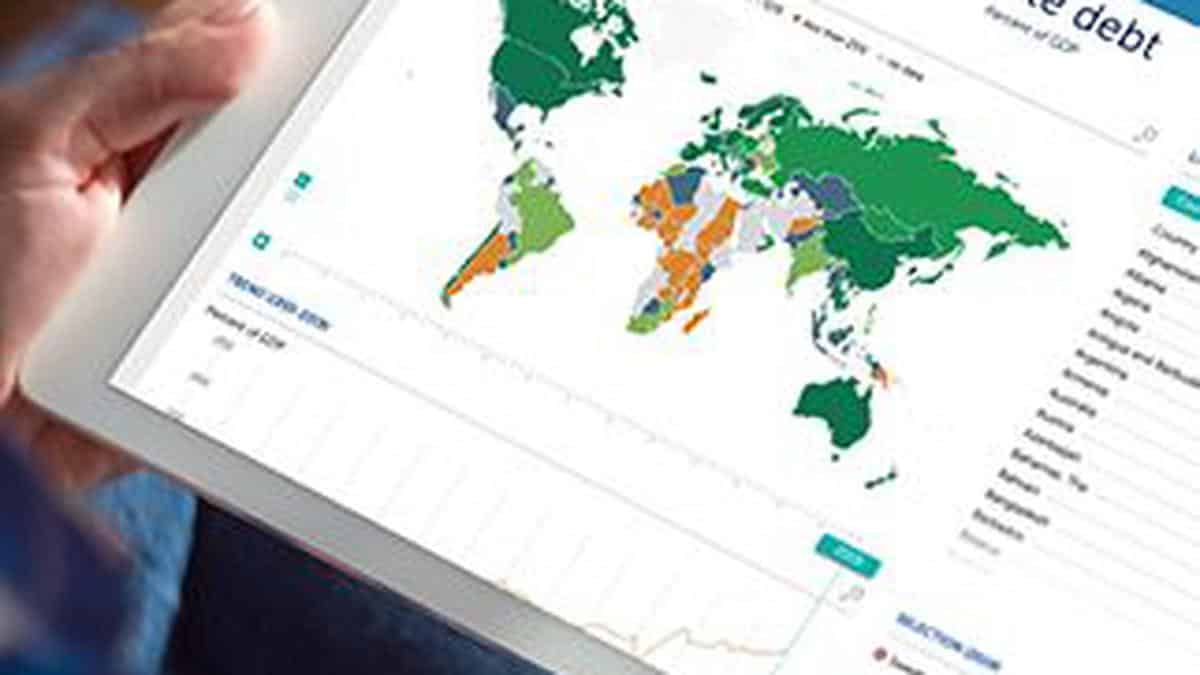What’s in Today’s Article?
- Why in News?
- What is Global Debt?
- Why is Global Debt Rising?
- Is the Rising Global Debt a Cause for Worry?
Why in News?
- According to the Institute of International Finance (IIF), global debt rose to an all-time high of $307 trillion in the 2nd quarter (April-June 2023), rising by about $100 trillion over the last decade.
What is Global Debt?
- Global debt refers to the borrowings of governments as well as private businesses and individuals.
- Governments borrow to meet various expenditures that they are unable to meet through tax and other revenues.
- Governments may also borrow to pay interest on the money that they have already borrowed to fund past expenditures. The private sector borrows predominantly to make investments.
- Both global debt in nominal terms and global debt as a share of GDP have been rising steadily over the decades.
- The rise came to a halt during the pandemic as economic activity turned sluggish and lending slowed down.
- But global debt levels have started to rise again in the last few quarters. During the first half of 2023, total global debt rose by $10 trillion.
- Most (over 80%) of the rise in global debt in the first half of the year has come from advanced economies such as the US, UK, Japan, and France.
- Among emerging market economies, China, India and Brazil have seen the most growth in debt.
Why is Global Debt Rising?
- This has happened amid rising interest rates, which was expected to adversely affect demand for loans.
- What is more interesting than rising debt levels is the drop in global debt as a share of GDP over seven consecutive quarters prior to 2023.
- The IIF attributes this to the rise in price inflation, which it claims has helped governments to inflate away the debts denominated in their local currencies.
- Inflating away of debt refers to the phenomenon wherein the central bank of a country either directly or indirectly uses freshly created currency to effectively pay off outstanding government debt.
- But the creation of fresh money causes prices to rise, thus imposing an indirect tax on the wider economy to pay the government’s debt.
- A further rise in debt levels over time is to be expected since the total money supply usually steadily rises each year in countries across the globe.
Is the Rising Global Debt a Cause for Worry?
- Rising global debt levels usually leads to concerns about the sustainability of such debt.
- The IIF has warned that the international financial infrastructure is not equipped to handle unsustainable domestic debt levels.
- This is particularly so in the case of government debt which is prone to rise rapidly due to reckless borrowing by politicians to fund populist programmes.
- When central banks raise interest rates, servicing outstanding debt becomes a challenge for governments with a heavy debt burden.
- Rising interest rates can increase pressure on governments and force them to either default outright or inflate away their debt.
- Rapidly rising private debt levels also lead to worries among analysts about their sustainability.
- This is because such a rise is linked to unsustainable booms that end in economic crises when such lending is not backed by genuine savings.
- The most recent example of the same was the 2008 global financial crisis, which was immediately preceded by an economic boom fueled by the US Federal Reserve’s easy credit policy.
Q1) What caused the 2008 global financial crisis?
The catalysts for the global financial crisis were falling US house prices and a rising number of borrowers unable to repay their loans.
Q2) What was the impact of the 2008 global financial crisis on India?
The global crisis affected India through three different ways: Financial markets, Trade flows, and Exchange rates. The immediate effects were: dropping stock prices, a net outflow of foreign capital, a large reduction in foreign reserves and a sharp tightening of domestic liquidity.
Last updated on January, 2026
→ Check out the latest UPSC Syllabus 2026 here.
→ Join Vajiram & Ravi’s Interview Guidance Programme for expert help to crack your final UPSC stage.
→ UPSC Mains Result 2025 is now out.
→ UPSC Notification 2026 is scheduled to be released on January 14, 2026.
→ UPSC Calendar 2026 has been released.
→ UPSC Prelims 2026 will be conducted on 24th May, 2026 & UPSC Mains 2026 will be conducted on 21st August 2026.
→ The UPSC Selection Process is of 3 stages-Prelims, Mains and Interview.
→ Prepare effectively with Vajiram & Ravi’s UPSC Prelims Test Series 2026 featuring full-length mock tests, detailed solutions, and performance analysis.
→ Enroll in Vajiram & Ravi’s UPSC Mains Test Series 2026 for structured answer writing practice, expert evaluation, and exam-oriented feedback.
→ Join Vajiram & Ravi’s Best UPSC Mentorship Program for personalized guidance, strategy planning, and one-to-one support from experienced mentors.
→ UPSC Result 2024 is released with latest UPSC Marksheet 2024. Check Now!
→ UPSC Toppers List 2024 is released now. Shakti Dubey is UPSC AIR 1 2024 Topper.
→ Also check Best UPSC Coaching in India

















